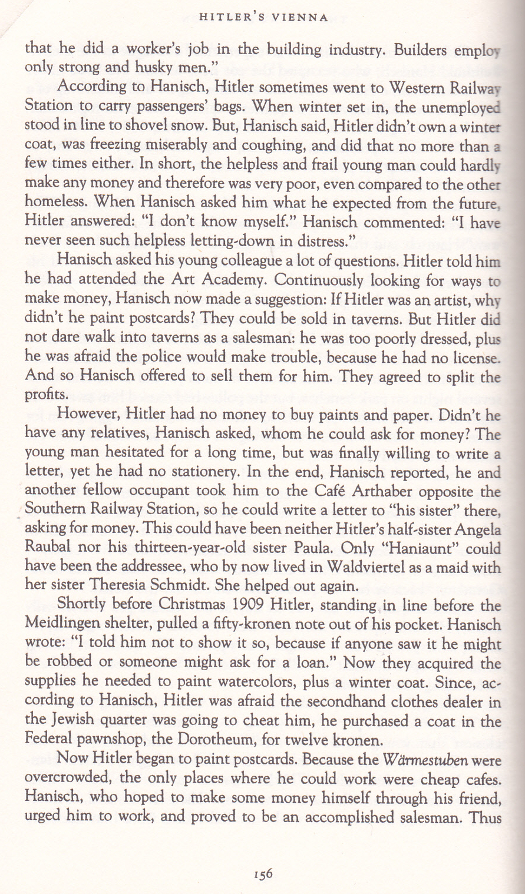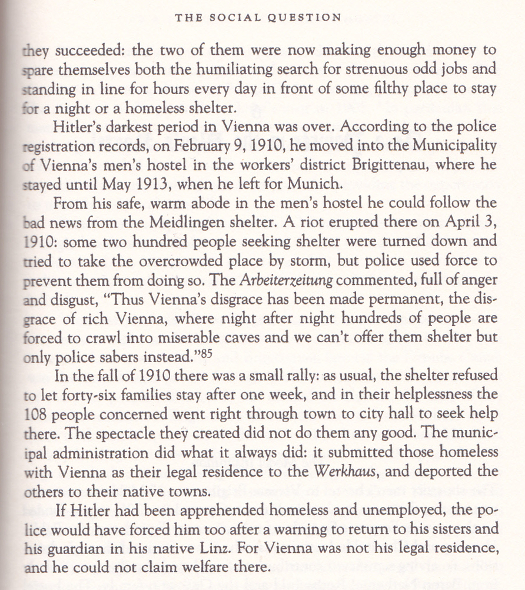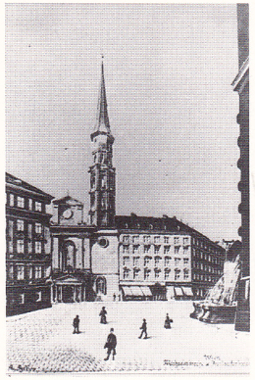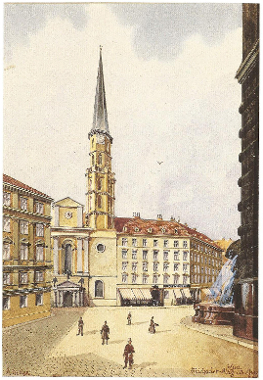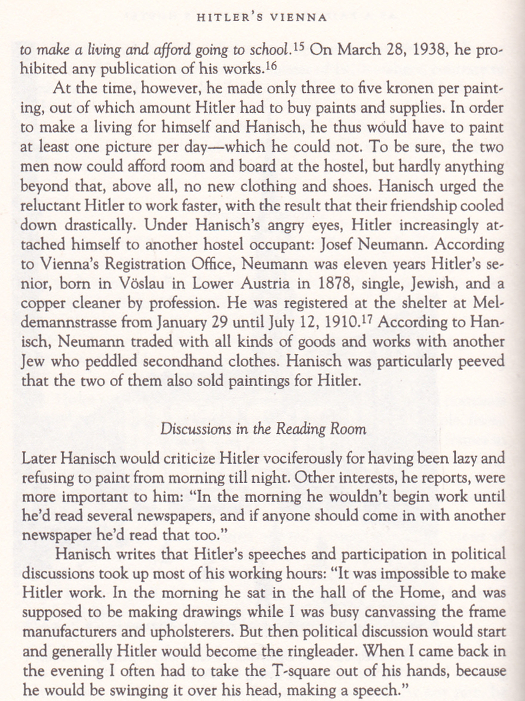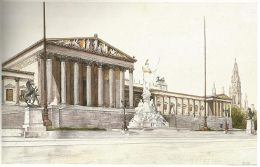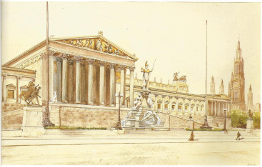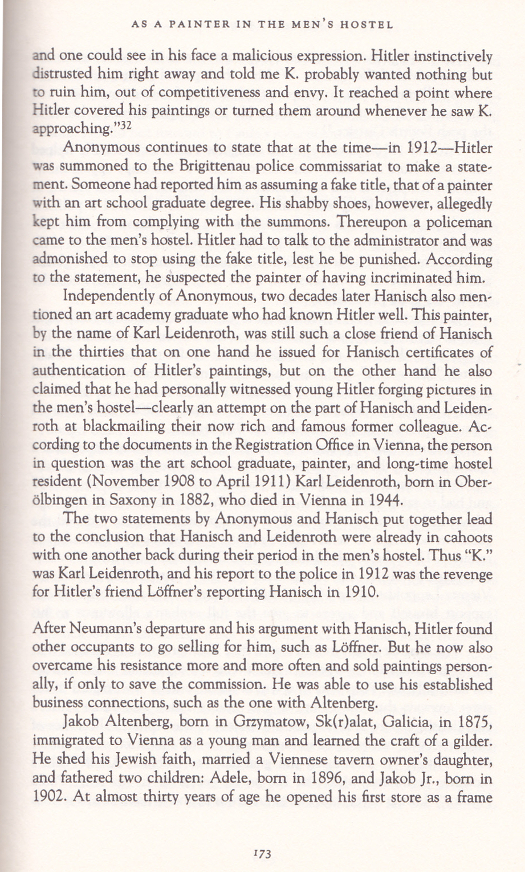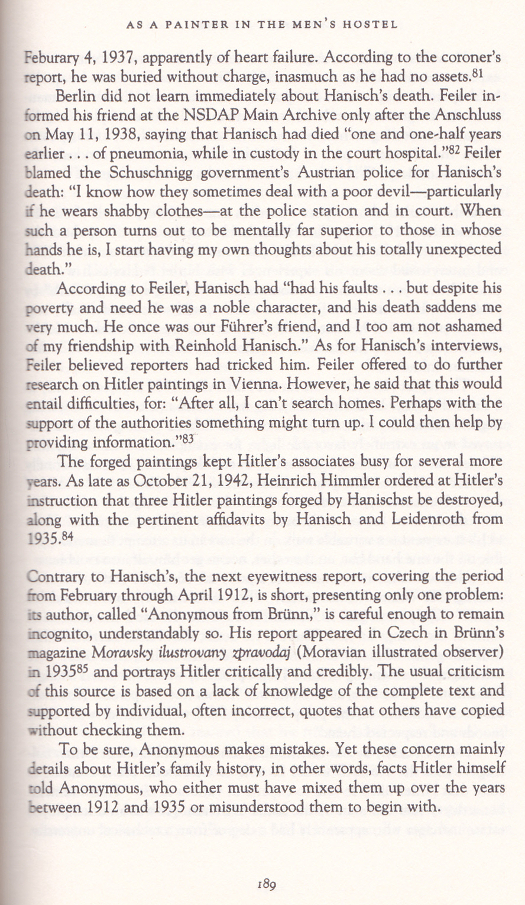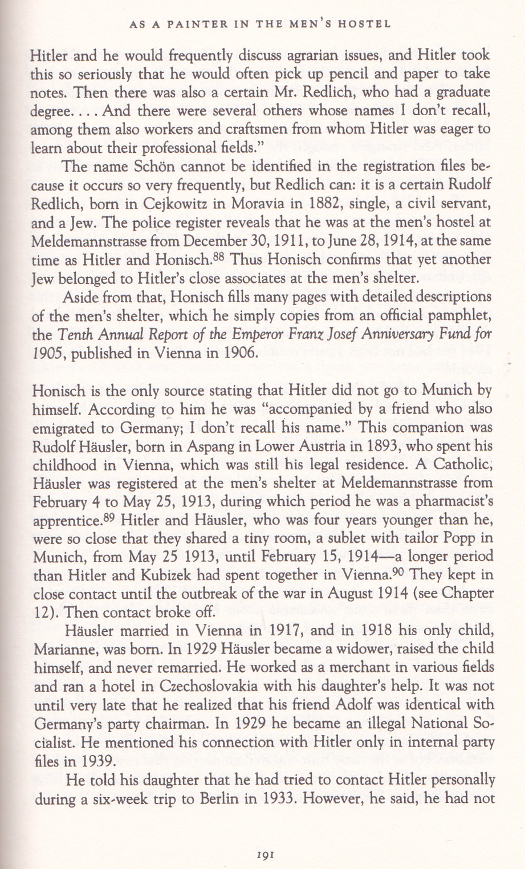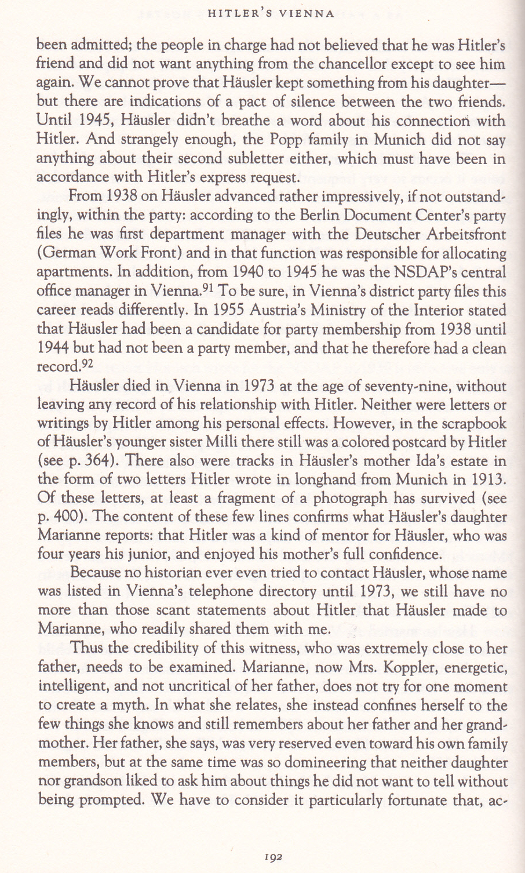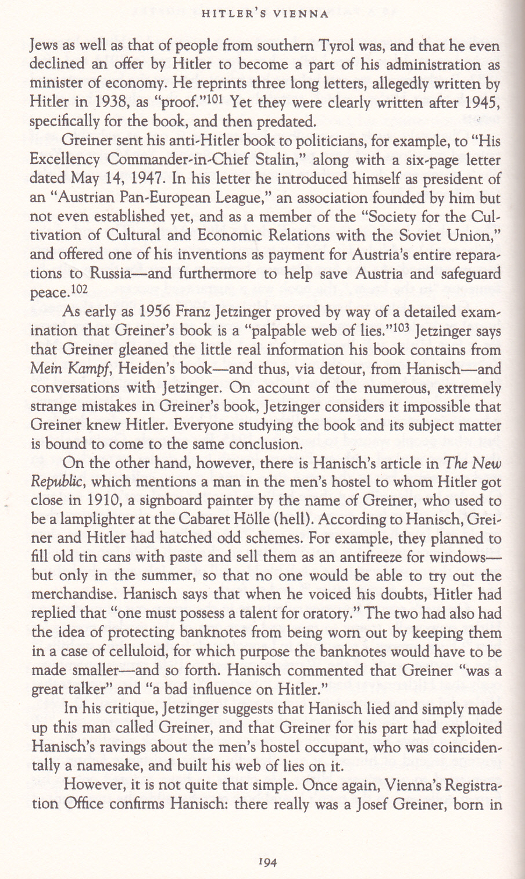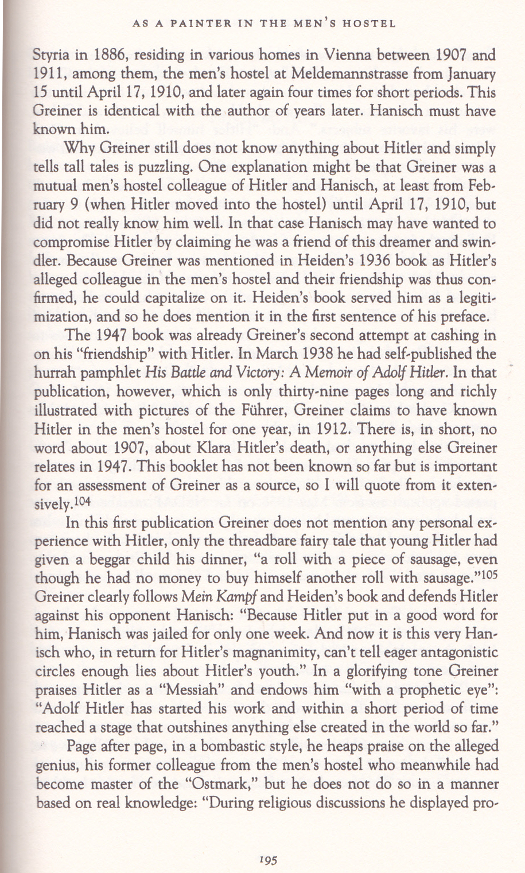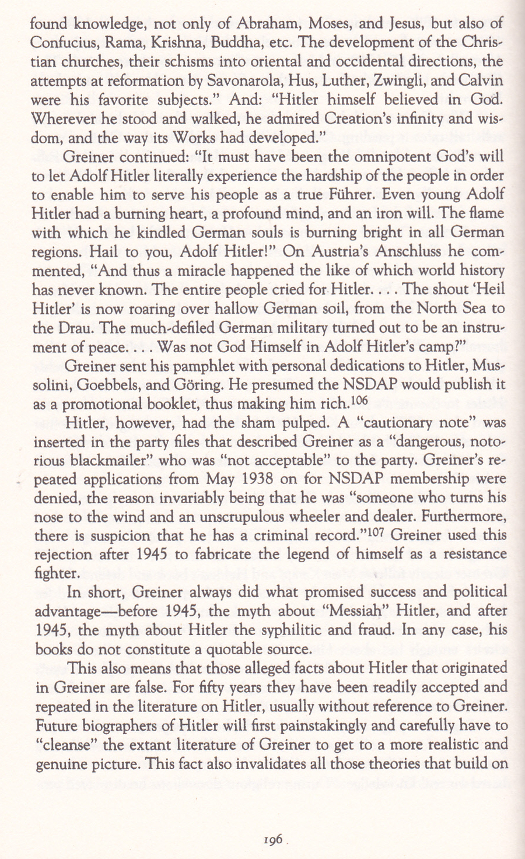|
|
||||||||||||||||||
versie: 10 januari 2018 - NIOD-begin | beginpagina Droog
Witnesses on Hitler, 1909-1914 Hitler's source book for his paintings?
Brigitte Hamann. Hitlers Wien. Lehrjahre eines Diktators. Piper, München, 1996. 652p. English translation: Hitlers Vienna. A dictator's apprenticeship. Oxford University Press, New York, 1999. 482p. Nederlandse vertaling: Het Wenen van Hitler. De biografie van de jonge Adolf. Vertaling [uit het Duits] Roelof Posthuma. Omniboek, Utrecht, [2014]. 508p. Introduction Unfortunately, these 'migrating mistakes' do occur in her book too. She relied on concoctions made up by the Austrian art dealer and swindler Peter Jahn, and she used the book Adolf Hitler als Maler und Zeichner (of which Jahn was co-author), for which she herself warned against as being totally unreliable, as a source. Page 155 Page 162 Page 163
Page 356 Page 171
But is she correct on this? The painting on the righ is Florence 5, also titled 'Wien, Parlament. Part of the same collection of alleged Hitler watercolors that since 1945 (not 1946) is safeguarded in Italy. Both have almost similar sizes, Nr. 4 measures 26,5 x 41,6 cm, nr. 5 26 x 41,3 cm. Page 172
Page 175 Page 185 Page 186 Page 187 Page 188 Page 190 Page 193 Page 197 - Hitler myths
DROOG- tijdschrift voor diepgravende onderzoeks-journalistiek. Droog, onafhankelijk en ter zake. Over zaken uit heden en verleden die er toe doen of deden. Zaken die meer aandacht vragen dan in een artikel van een of twee papieren pagina’s gegeven kan worden.
Steun ons op Facebook: Droog - Slow jounalism |
||||||||||||||||||



